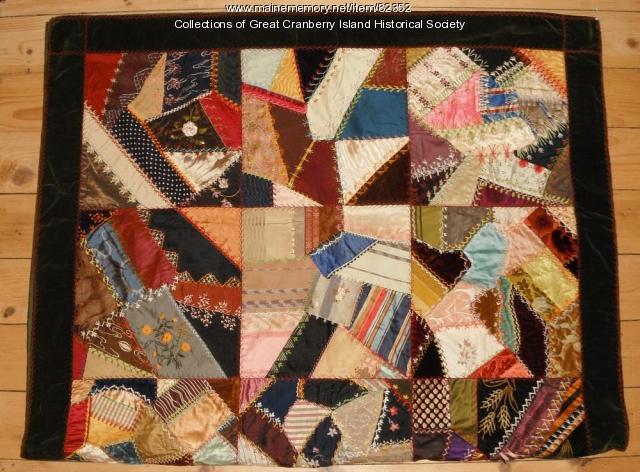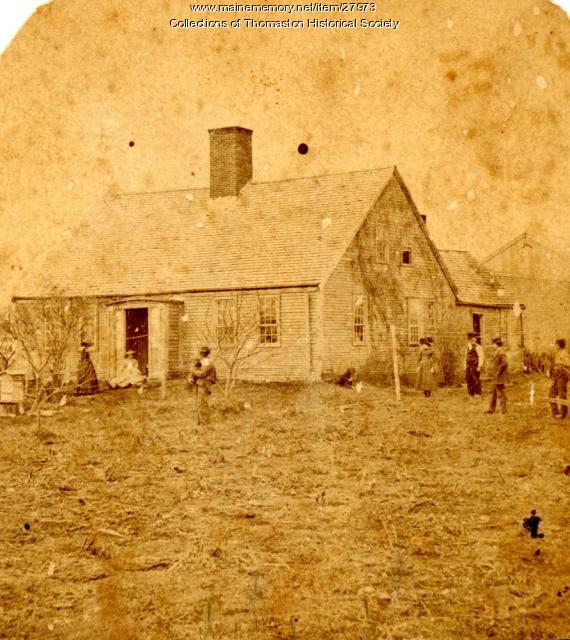Keywords: Great
Item 12201
Orr's-Great Island bridge, ca. 1915
Contributed by: Pejepscot History Center Date: circa 1915 Location: Harpswell; Harpswell Media: Photograph, print
Item 11117
Contributed by: Aroostook County Historical and Art Museum Date: 1902-05-18 Location: Houlton Media: Photographic print
Item 85621
Great Diamond Island Association property, Great Diamond Island, Portland, 1924
Owner in 1924: Great Diamond Island Association Use: Wharf & Waiting Room
Item 85630
Great Diamond Island Association property, Bay Avenue, Great Diamond Island, Portland, 1924
Owner in 1924: Great Diamond Island Association Use: Wharf
Item 148951
Sleeping camp floor plan, 1913
Contributed by: Maine Historical Society Date: 1913 Client: Great Northern Paper Company Architect: Great Northern Paper Company
Item 148733
Plan of Seboomook Farm, Seboomook, 1923
Contributed by: Maine Historical Society Date: 1923 Location: Seboomook Client: Great Northern Paper Company Architect: Great Northern Paper Company
Exhibit
Great Cranberry Island's Preble House
The Preble House, built in 1827 on a hilltop over Preble Cove on Great Cranberry Island, was the home to several generations of Hadlock, Preble, and Spurling family members -- and featured in several books.
Exhibit
In 1954, November 11 became known as Veterans Day, a time to honor American veterans of all wars. The holiday originated, however, as a way to memorialize the end of World War I, November 11, 1918, and to "perpetuate peace through good will and mutual understanding between nations." Mainers were involved in World War I as soldiers, nurses, and workers on the homefront aiding the military effort.
Site Page
View collections, facts, and contact information for this Contributing Partner.
Site Page
Great Cranberry Island Historical Society
View collections, facts, and contact information for this Contributing Partner.
Story
Make It Great Again
by SC
2020, Acrylic on canvas
Story
Wampum Belts
by Donald Soctomah
My great grandfather was a wampum keeper
Lesson Plan
Grade Level: 9-12
Content Area: Social Studies
Maine's quest for statehood began in the years immediately following the American Revolution. Though the state of Massachusetts consented to the separation in 1819 and Maine would ultimately achieve statehood in 1820, Maine’s split from Massachusetts was not without controversy and was not universally supported by people living in Maine. Using primary sources, students will explore the arguments for and against Maine statehood. Students will gather evidence and arguments to debate the statement: It is in the best interests of the people of Maine for Maine to become its own state.
Lesson Plan
Longfellow Studies: The Exile of the People of Longfellow's "Evangeline"
Grade Level: 6-8
Content Area: Social Studies
Other materials needed:
- Copy of Henry Wadsworth Longfellow's "Evangeline"
- Print media and Internet access for research
- Deportation Orders (may use primary document with a secondary source interpretation)
Throughout the course of history there have been many events in which great suffering was inflicted upon innocent people. The story of the Acadian expulsion is one such event. Britain and France, the two most powerful nations of Europe, were at war off and on throughout the 18th century. North America became a coveted prize for both warring nations. The French Acadians of present day Nova Scotia fell victim to great suffering. Even under an oath of allegiance to England, the Acadians were advised that their families were to be deported and their lands confiscated by the English. This event was immortalized by Henry Wadsworth Longfellow's epic poem "Evangeline", which was published in 1847.






















